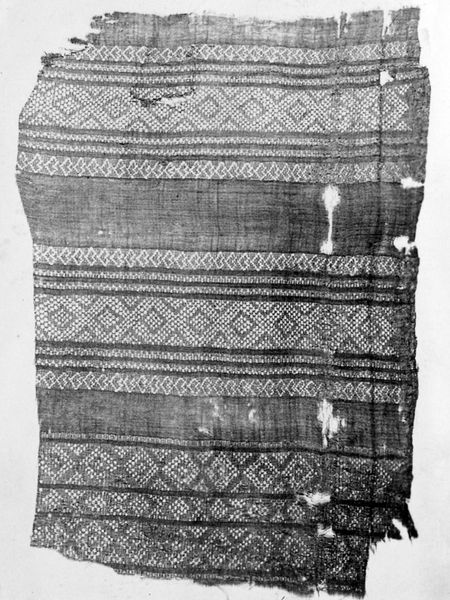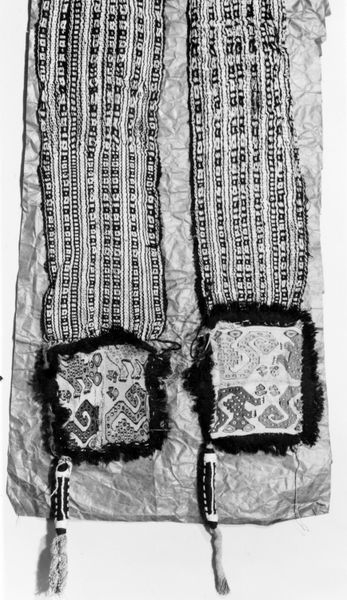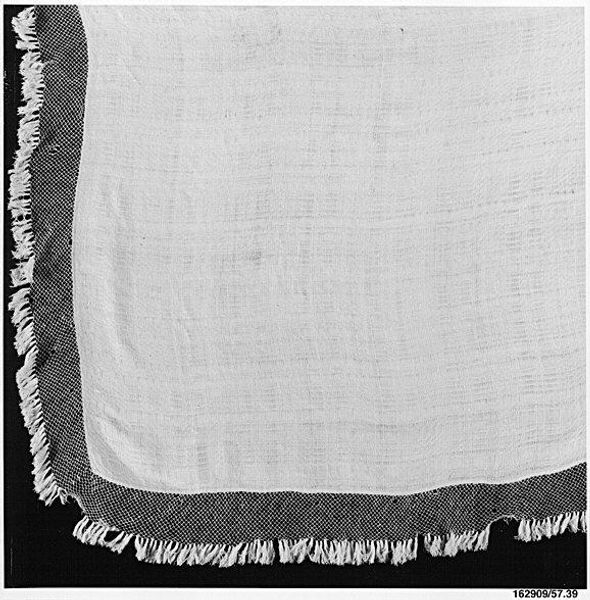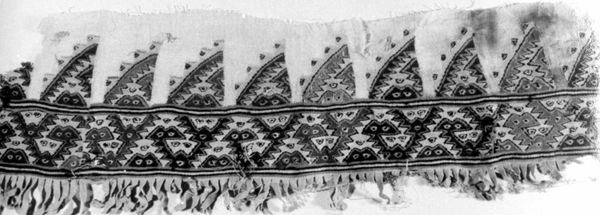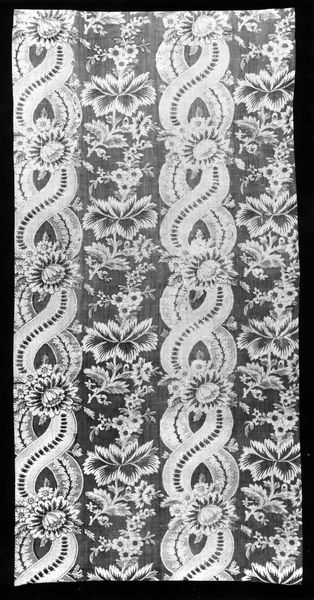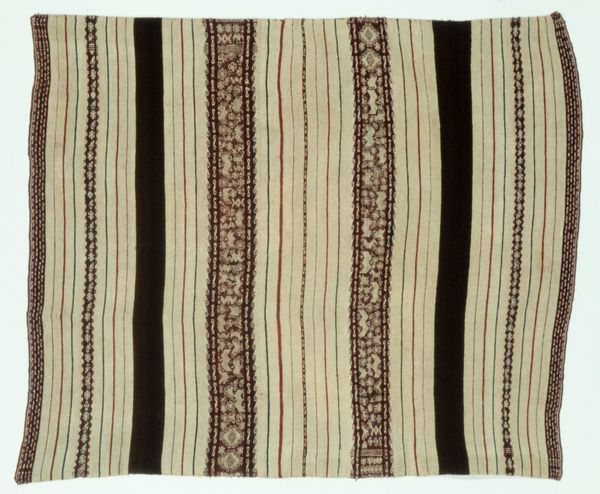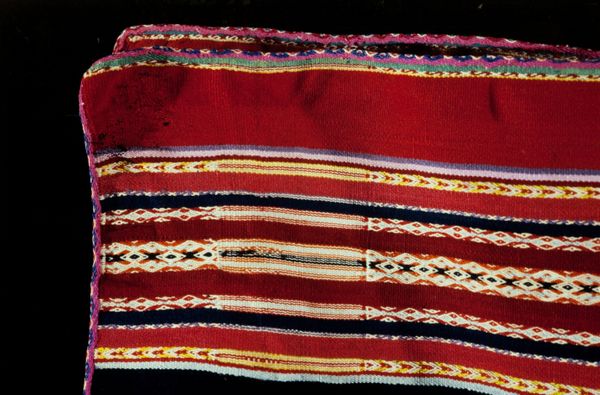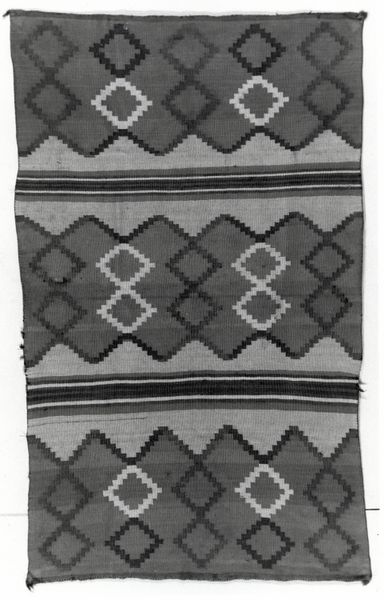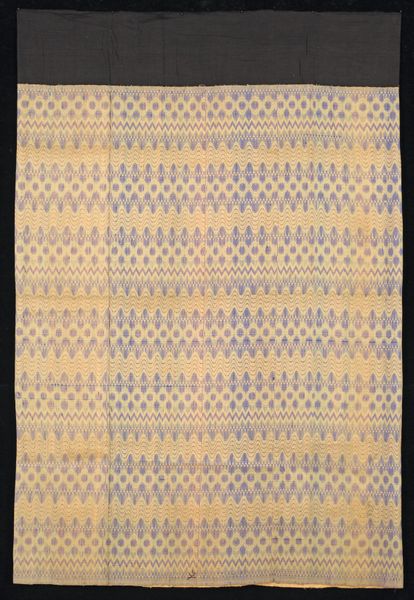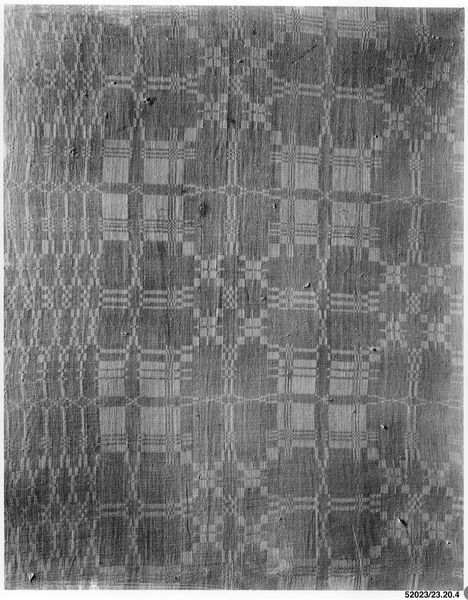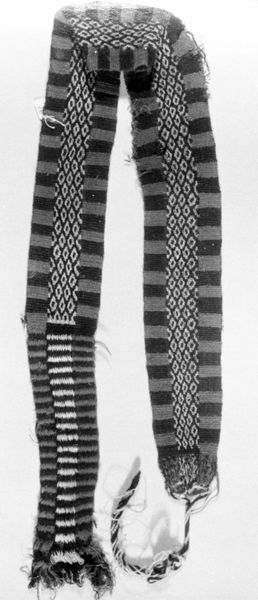
weaving, textile
#
sculpture
#
weaving
#
textile
#
engraving
#
geometric
#
indigenous-americas
Dimensions: 36.8 × 34.3 cm (14 1/2 × 13 1/2 in.)
Copyright: Public Domain
Editor: Here we have "Fragments," a textile weaving, potentially from between 1000 and 1476. The piece looks geometrically striking; bands of abstracted forms are presented in horizontal rows. I wonder, what do you make of its symbolic significance? Curator: The enduring power of symbols is palpable here. The geometric motifs aren't mere decoration. What feelings do these repeating shapes and patterns stir in you? Do they evoke a sense of order, chaos, or perhaps a connection to something greater? Editor: Order, certainly. The repetition and defined lines suggest structure. But are you implying these shapes would have had specific meanings at the time of its creation? Curator: Absolutely. Consider the worldview of the culture that created this textile. For example, triangles often represented deities or the cosmos itself. Could the weavers have been encoding stories, beliefs, or prayers into this material? Editor: So, this isn't just decorative art; it's a narrative? A record? Curator: Precisely. Textiles in many cultures weren't simply functional, they were powerful communicative tools. Each choice - the fibre, the dyes, the patterns - carried layers of meaning, connecting the wearer, and the maker, to their world. The passage of time alters that symbolism, so what does that reveal to you about the cultural memory embedded within art? Editor: It's incredible to think that something as simple as a shape could hold so much weight. Looking at these fragments, it seems we’re seeing the remnants of an ancient symbolic language. Thank you for helping reveal these intricate connections. Curator: Indeed. We are now more aware of the psychological and emotional connections embedded into it.
Comments
No comments
Be the first to comment and join the conversation on the ultimate creative platform.
